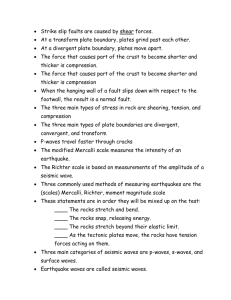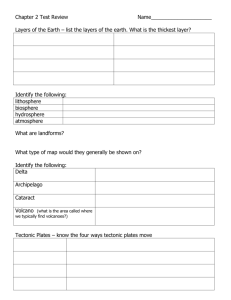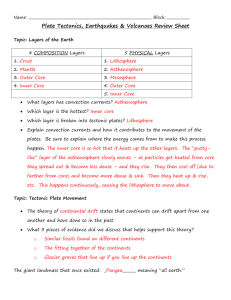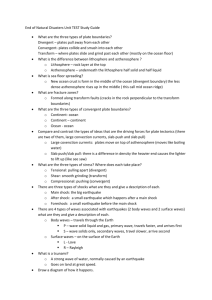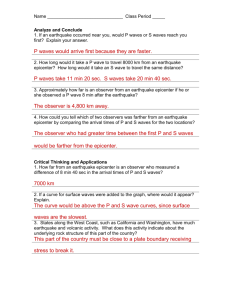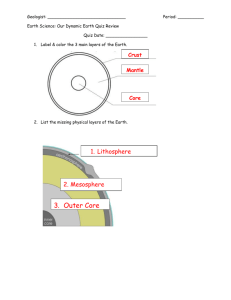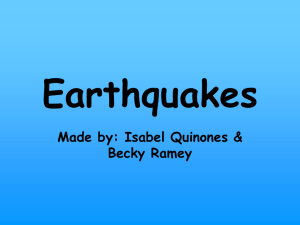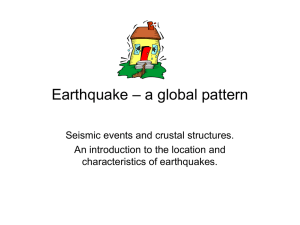Plate Tectonics Study Guide: Earthquakes, Volcanoes, Oceans
advertisement
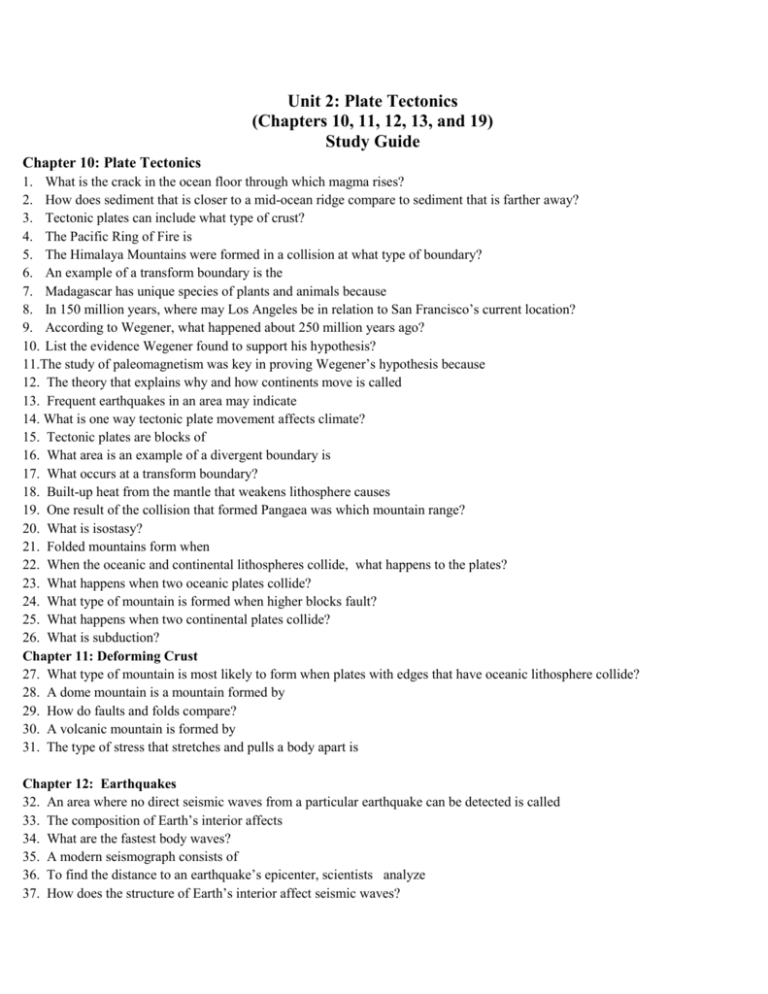
Unit 2: Plate Tectonics (Chapters 10, 11, 12, 13, and 19) Study Guide Chapter 10: Plate Tectonics 1. What is the crack in the ocean floor through which magma rises? 2. How does sediment that is closer to a mid-ocean ridge compare to sediment that is farther away? 3. Tectonic plates can include what type of crust? 4. The Pacific Ring of Fire is 5. The Himalaya Mountains were formed in a collision at what type of boundary? 6. An example of a transform boundary is the 7. Madagascar has unique species of plants and animals because 8. In 150 million years, where may Los Angeles be in relation to San Francisco’s current location? 9. According to Wegener, what happened about 250 million years ago? 10. List the evidence Wegener found to support his hypothesis? 11.The study of paleomagnetism was key in proving Wegener’s hypothesis because 12. The theory that explains why and how continents move is called 13. Frequent earthquakes in an area may indicate 14. What is one way tectonic plate movement affects climate? 15. Tectonic plates are blocks of 16. What area is an example of a divergent boundary is 17. What occurs at a transform boundary? 18. Built-up heat from the mantle that weakens lithosphere causes 19. One result of the collision that formed Pangaea was which mountain range? 20. What is isostasy? 21. Folded mountains form when 22. When the oceanic and continental lithospheres collide, what happens to the plates? 23. What happens when two oceanic plates collide? 24. What type of mountain is formed when higher blocks fault? 25. What happens when two continental plates collide? 26. What is subduction? Chapter 11: Deforming Crust 27. What type of mountain is most likely to form when plates with edges that have oceanic lithosphere collide? 28. A dome mountain is a mountain formed by 29. How do faults and folds compare? 30. A volcanic mountain is formed by 31. The type of stress that stretches and pulls a body apart is Chapter 12: Earthquakes 32. An area where no direct seismic waves from a particular earthquake can be detected is called 33. The composition of Earth’s interior affects 34. What are the fastest body waves? 35. A modern seismograph consists of 36. To find the distance to an earthquake’s epicenter, scientists analyze 37. How does the structure of Earth’s interior affect seismic waves? 38. P waves are also known as 39. How do scientists find the epicenter of an earthquake? 40. Why do earthquakes usually occur at plate boundaries? 41. What is the epicenter of an earthquake? 42. S waves are also known as . 43. What causes tsunamis? 44. What effect does Earth’s interior have on P waves and S waves? Chapter 13: Volcanoes 45. List areas of major volcanic activity? 46. This area is both a major earthquake zone and volcano zone. 47. What forms on the ocean floor in a subduction zone? 48. List the signals a volcanic eruption? 49. Composite volcanoes are also known as 50. When the temperature of rock rises above its melting point, what forms? 51. The eruption of Mount St. Helens was what type of eruption? 52. When oceanic lithosphere subducts beneath oceanic lithosphere, 53. A large circular depression that forms when the magma chamber below a volcano partially empties, causing the ground above it to sink, is called a 54. An area of volcanic activity far from a tectonic plate boundary is called a(n) Chapter 19: Ocean Basin 55. The flattest regions on Earth are 56. Seamounts are most likely to form in . 57. The deepest and largest ocean on Earth is the 58. An atoll changes into a guyot because of 59. A continental shelf is part of the 60. To calculate the depth of the ocean floor with sonar, scientists measure 61. The average depth of water covering a continental shelf is 62. The Mariana Trench is best known for its 63. The mid-ocean ridges in Iceland are unusual because
